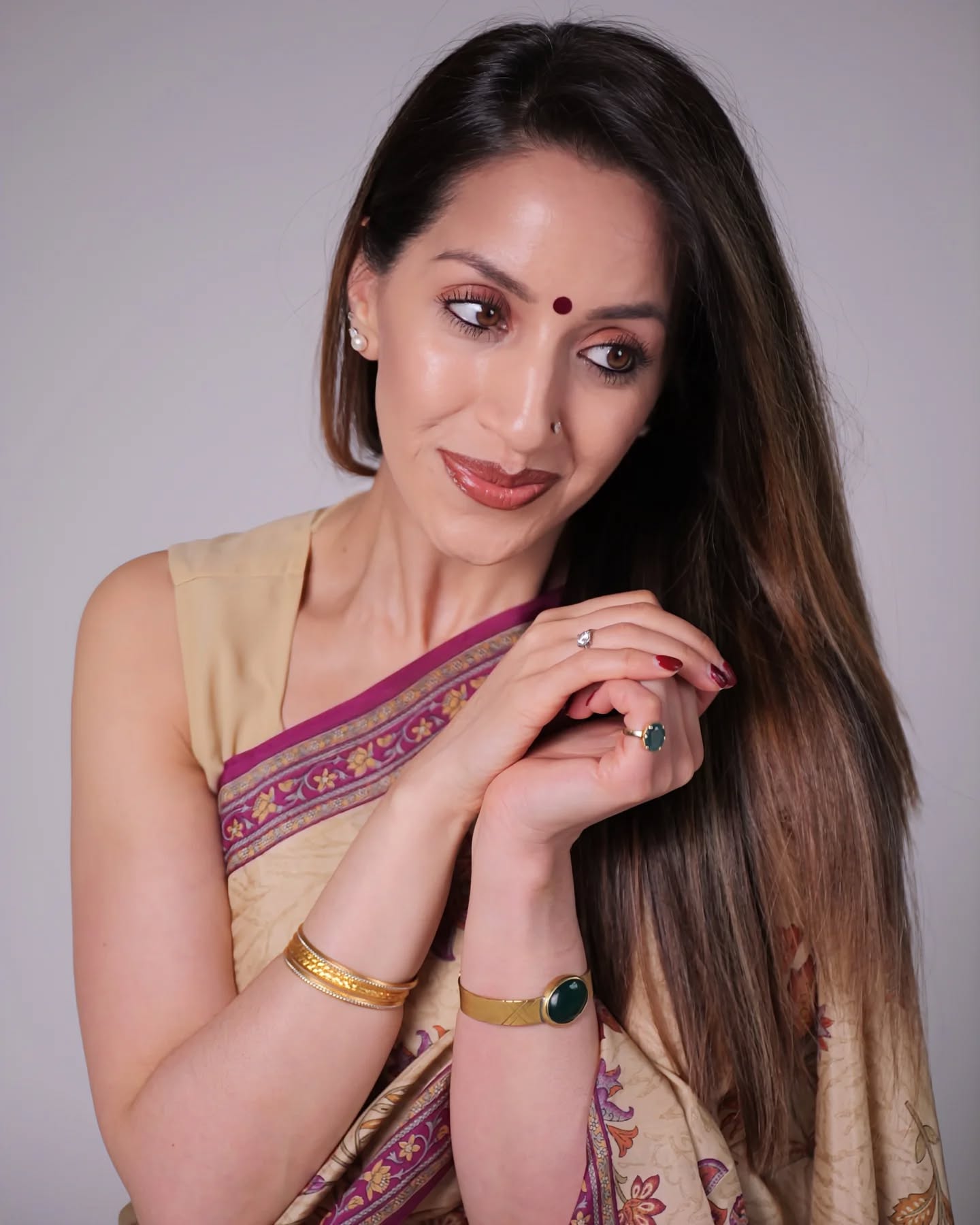Written Interview
The Voyage of Sam Singh
by Gita Ralleigh
Gita’s Writing Journey
Dr. Ria Meera: What inspired you to write “The Voyage of Sam Singh” after “The Destiny of Minou Moonshine”?
Gita: I hadn’t imagined writing a direct sequel to The Destiny of Minou Moonshine but my publishers were keen for the second book to have a similar feel. I had already researched the history of the Andaman Islands, so I was keen to set this book on a fictional version, but incorporate some of the same characters.
Dr. Ria Meera: How did your approach to writing change with this book?
Gita: I had much less time to write this second book because of publishing deadlines, so I had to be very disciplined! I pushed my daily word count up to my own personal limit (about 2000 words/ day) and wrote every spare moment I had.
Dr. Ria Meera: What do you enjoy most about writing for a younger audience?
Gita: I love that younger readers will follow you anywhere, as long as your story is engaging and your characters relatable. Adults tend to be more fixed about which genres they will and won’t read.
Dr. Ria Meera: How do you draw from your personal experiences when writing children’s fiction?
Gita: I think human emotions are universal – we’ve all felt shy and hesitant when meeting new people, or conflicted if someone in authority isn’t acting as they should. My young characters are usually very self-sufficient and have to learn to trust other people in order to achieve their goals, this certainly reflects my own childhood experience.
Dr. Ria Meera: What has been the most rewarding feedback you’ve received from young readers?
Gita: I love it when teachers send me examples of the work their students have created – everything from reviews to rebel recruitment posters to their own versions of the cover.
Book Inspiration
Dr. Ria Meera: What was the initial spark that led to the creation of Sam Singh’s world?
Gita: I was reading about children who have an incarcerated family member, and the shame and fear they feel around this. I knew of the colonial prison on the Andaman Islands and wondered what would happen if a child set out to rescue his brother from somewhere like that.
Dr. Ria Meera: How did you come up with the idea of the Isle of Lost Voices?
Gita: The Isle of Lost Voices is based on the Andaman Islands, and both the prison on the island and Lola’s indigenous people exist in real life. As in many places, development and tourism threaten traditional lifestyles, currently this is a real concern for the Andaman and Nicobar islands which are both part of India.
Dr. Ria Meera: What inspired the blend of humour and danger in the story?
Gita: I think you need to have both when writing for young people – after all children laugh a lot more than we adults do!
Dr. Ria Meera: How did you develop the concept of land-pirates?
Gita: The land-pirates are also a real community, the Narikuruvars in South India who were called ‘land-pirates’ by British anthropologists. I used original 19th century texts and researched the community’s contemporary issues to build up a picture of their culture.
Dr. Ria Meera: Are there any historical events or figures that influenced the story?
Gita: There are many, but the Earl of Mayo, represented by a ghostly statue that gallops about at night on the Isle, was actually a real Viceroy of India who died in the Andamans.
Themes
Dr. Ria Meera: How do themes of identity and courage play out in Sam Singh’s journey?
Gita: Sam is from a poor and marginalised background. Through his friendship with Lola, and others on the Isle, he finds the courage to speak out against injustice and realises his own true worth.
Dr. Ria Meera: What moral lessons do you hope to convey through the story?
Gita: I hope my books convey that children shouldn’t follow authority unquestioningly and should never be afraid to speak up for their beliefs.
Dr. Ria Meera: How do you ensure that themes like resilience and bravery are accessible to young readers?
Gita: For me, the guiding principle is always show, don’t tell. The Collector (the villain of the story) shows by his actions that he’s untrustworthy and disrespects the traditions of Lola’s people. Lola’s people in turn, demonstrate hospitality, care and respect for others even though The Collector considers them primitive and himself civilised.
Dr. Ria Meera: What themes do you think are particularly important for children today?
Gita: I once heard a talk by a school head who said that they only had three school rules: respect yourself, respect the school and respect your students and teachers. If we substitute our Earth for ‘school’ and humanity for ‘students and teachers’, I think those are probably the three key themes.
Dr. Ria Meera: How do you balance entertainment with meaningful themes in your writing?
Gita: It might sound strange but I never consciously try to incorporate themes – because of my young character’s situation and position in society, they arise naturally.
Characters
Dr. Ria Meera: What makes Sam Singh a compelling character for young readers?
Gita: I think Sam is a very relatable boy, he’s quiet and watchful but when required he’s also brave and loyal to friends and family, particularly his brother.
Dr. Ria Meera: How did you develop the supporting characters in the story?
Gita: A few characters came from The Destiny of Minou Moonshine while others like Lola’s grandfather just popped up, fully-formed.
Dr. Ria Meera: Are any of the characters based on people you know?
Gita: As before, they’re usually a mixture of different people and a fair sprinkling of my own imagination!
Dr. Ria Meera: How do you ensure your characters are relatable and inspiring?
Gita: I do spend time thinking about my characters, but they also develop and change as I’m writing, along with the events of the story.
For example I didn’t know exactly how Sam would find his brother when I began the book, but about halfway through it became clear to me, and this outcome played a part in shaping both their characters.
Dr. Ria Meera: What role does character development play in the overall story?
Gita: As above, for me they evolve together in a very organic way.
The Writing Process
Dr. Ria Meera: What research did you conduct for this book?
Gita: I was very lucky to have had membership of The London Library through winning a place on their mentorship scheme. This meant I could access everything from contemporary academic texts to old colonial photographs, and I made full use of their archives.
Dr. Ria Meera: How do you stay motivated throughout the writing process?
Gita: Like all writers, I love my characters, so once I’ve begun, I’m committed to seeing them through to the end of their story, or at least the chapter of their story I’ve chosen to tell!
Dr. Ria Meera: What advice would you give to new authors writing for children?
Gita: Don’t be boring is always my first piece of advice! And make sure to read lots of contemporary children’s books, as well as the books you loved as a child. The local library is your friend.
Dr. Ria Meera: How do you manage your writing schedule with other commitments?
Gita: You need to prioritise writing if you are going to come up with a finished novel. That doesn’t mean you neglect other responsibilities, but it does require sacrifices.
Indian Heritage and Influence
Dr. Ria Meera: Are there any specific Indian myths or legends that inspired elements of Sam Singh?
Gita: With The Voyage of Sam Singh, I thought about ghosts and spirits, and what they represent in different cultures – particularly concepts from Indian folklore about peaceful spirits as opposed to troubled ones.
Illustrations
Dr. Ria Meera: What was your vision for the book cover, and how did you work with the designer to bring it to life?
Gita: As with The Destiny of Minou Moonshine, I was presented with the cover when it was almost finished. I did send visual references for the children to the illustrator – this is where posting images on a Pinterest board comes in handy.
Dr. Ria Meera: Were there specific elements or symbols you wanted to include to represent the themes or characters of the story?
Gita: I was keen to have Suka the parrot on the cover – luckily the illustrator had already put him in there!
Dr. Ria Meera: What do you hope readers feel or understand when they first see the book cover?
Gita: I hope they feel that they’re about to set sail on Sam’s adventures, battling pirates and crocodiles, with Lola and Suka to help them.
Dr. Ria Meera: Are there any hidden details or design choices on the cover that hold personal significance for you or that readers might enjoy discovering?
Gita: I love the skull! I won’t give away what it represents, but it is important to the story.






0 Comments